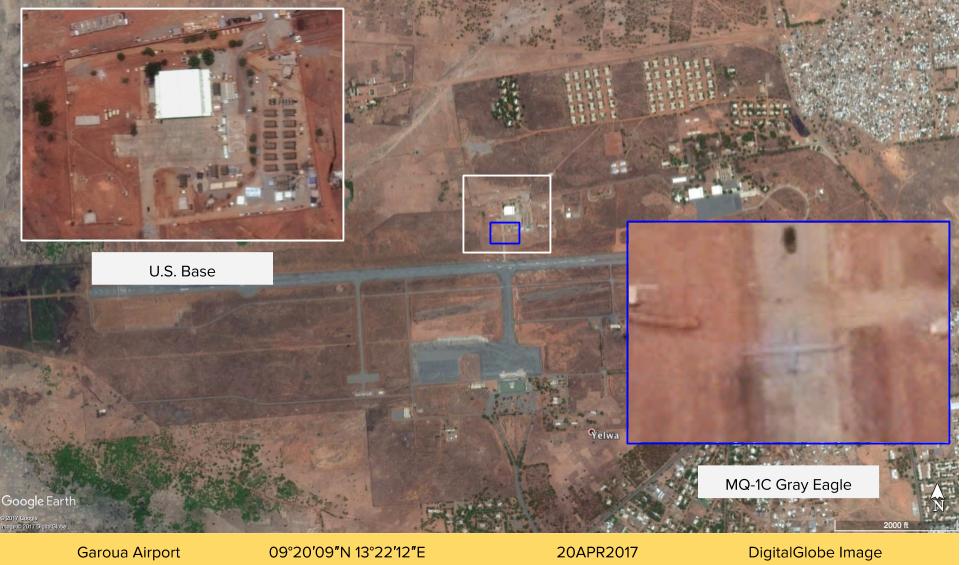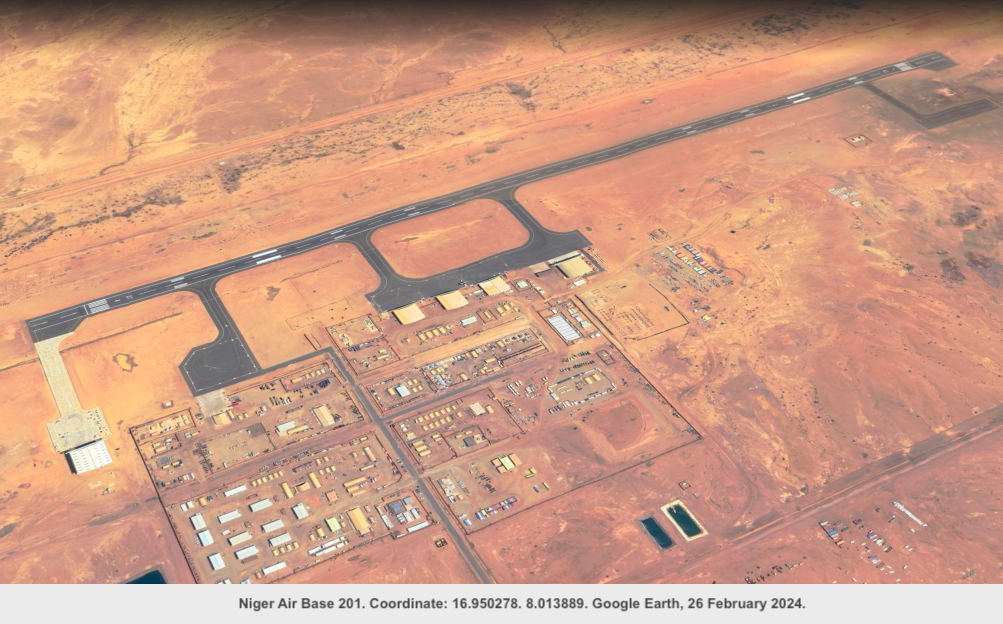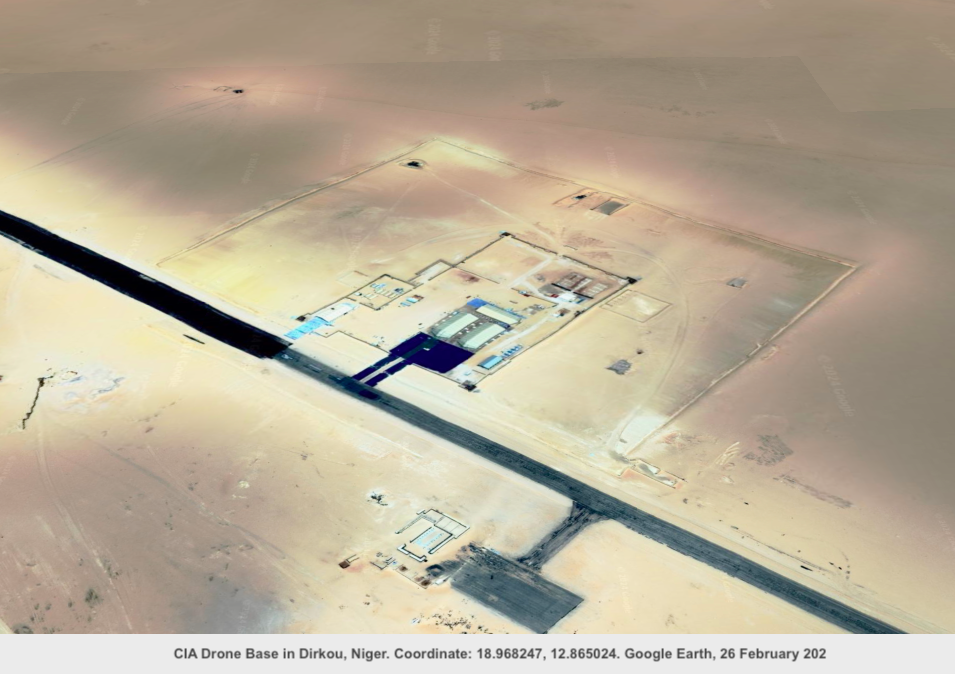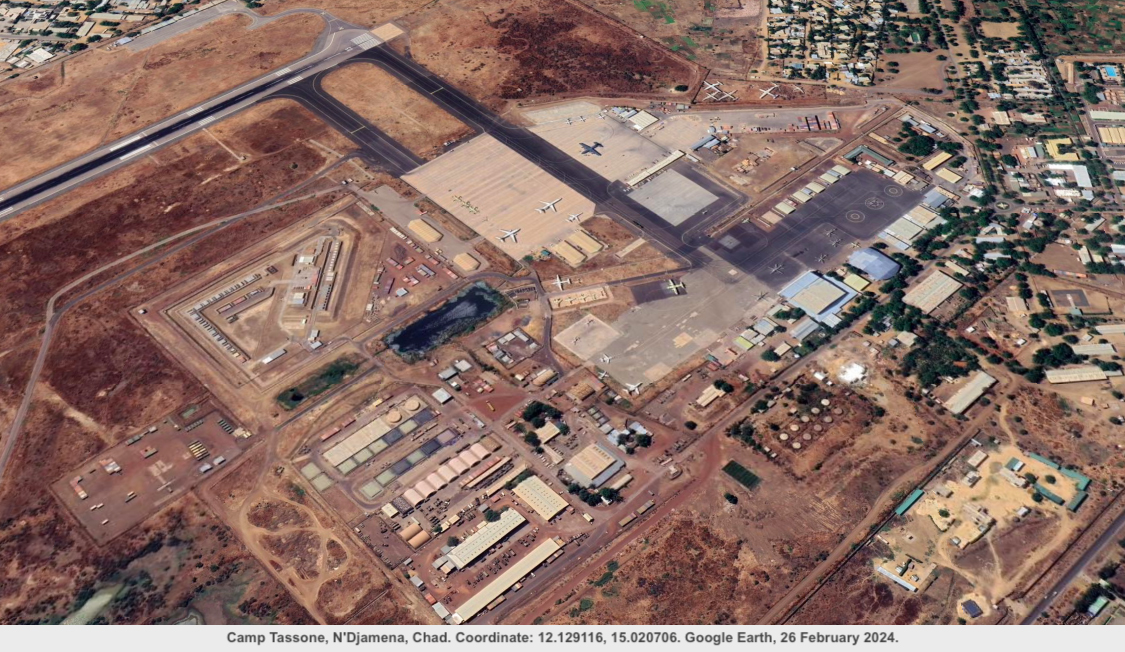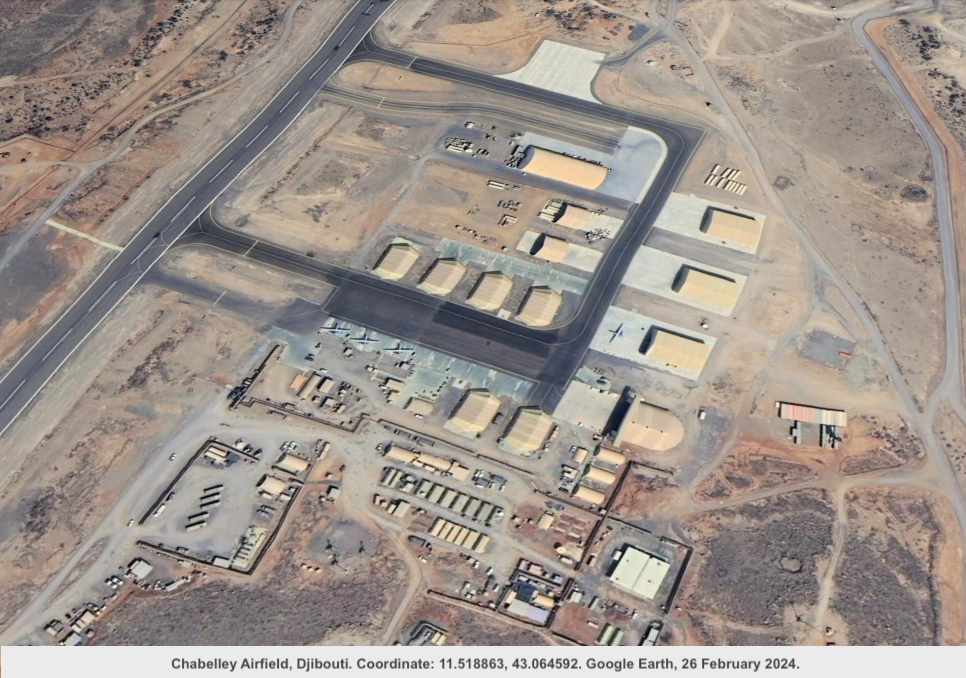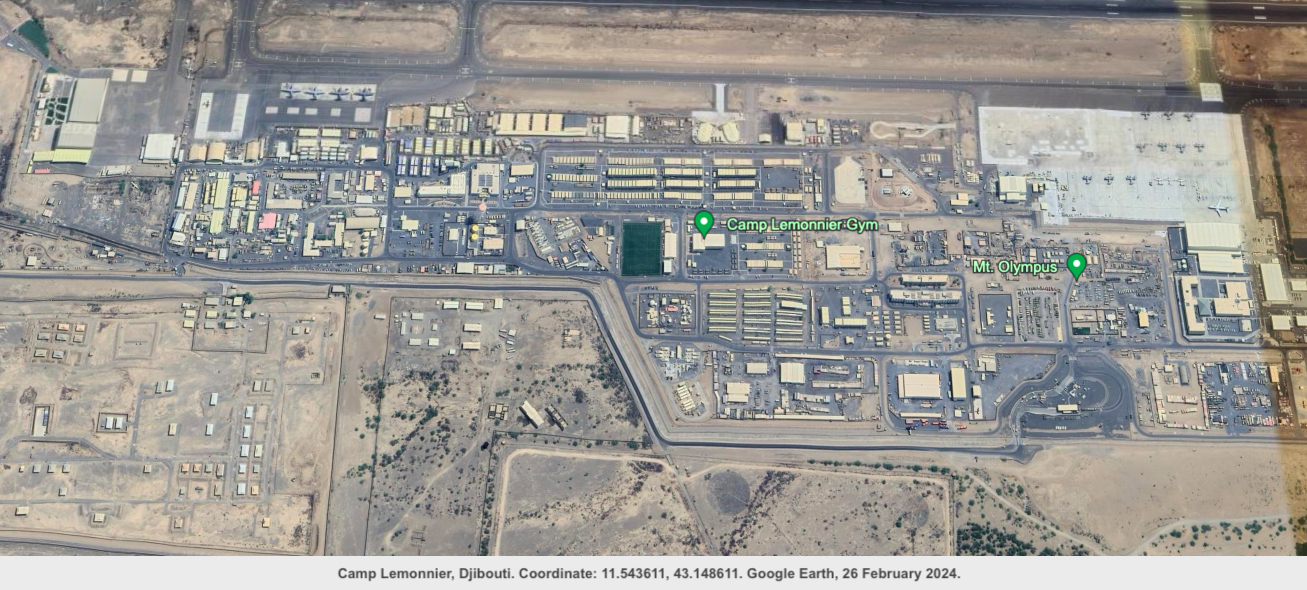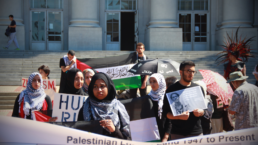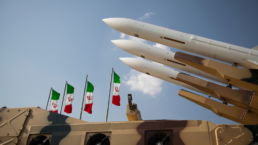The military usage of “unmanned aerial vehicles,” or drones, has continued to increase in recent years, both for spying on people and for blowing people up.
By Mohammed Abunahel, World BEYOND War
It is common to read in the news that the U.S. has almost no physical footprint in Africa, that it has only one military base in Africa, Camp Lemonnier in Djibouti. However, the fact is that the U.S. military maintains around 52 bases in Africa; among them, 10 are used as drone bases. See them all on a map and a list here. That count of the bases esxcludes those in Niger (8, with at least 3 being drone bases). Last week, the government of Niger told the U.S. military to depart the country. The U.S. is claiming to have trouble understanding the request.
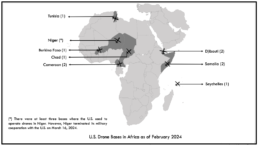
The military usage of “unmanned aerial vehicles,” or drones, has continued to increase in recent years, both for spying on people and for blowing people up. The drones are often launched from bases relatively near their targets, but piloted from other bases much farther away, usually in the United States.
Where are the U.S. military drone bases in Africa? Answering that question is challenging, due to the usage of some drone bases for secret operations, making it difficult to obtain specific information. This article enumerates the identified drone bases in Africa.
Map 1 illustrates the present locations that the U.S. military is employing for the purpose of launching drones and conducting spying flights across Central and North Africa. The map is not complete, but it contains all of the information that is available publicly.
Cameroon
In 2013, the U.S. established a military base in Salak, close to the northern border region between Nigeria and Chad. At Salak, the U.S. deployed six ScanEagle surveillance drones of the Class I variety by the year 2015.
The Times Aerospace in 2019 reported that “The US foreign military sale order for a Boeing Insitu ScanEagle tactical UAV system was placed. The system, comprising a control station, a relay station, a simulator, and six UAVs, started operating from Maroua-Salak in November 2016.”
In addition to being utilized for US operations, the installation in Salak also functioned as an unauthorized criminal detention facility. The Cameroonian military brutally tortured prisoners, the majority of whom were male and frequently members of the Kanuri ethnic minority. At the Salak facility, there have also been detentions of women and children. It was not Boko Haram terrorists who were being held in custody; rather, they were regular citizens who had been detained on suspicion of assisting Boko Haram.
The United States maintains another drone base in the north side of Garoua Airport. The first usage of this base by the U.S. can be traced back to 2015, when the United States, under the Obama administration, decided to send 90 U.S. troops and Predator drones to Cameroon under the pretext of helping aid the fight against Boko Haram in Nigeria. This decision was followed by the deployment of 300 U.S. troops, along with drones.
Upon the U.S. troops’ arrival, they constructed some facilities near the airport, which were actually command-and-control facilities for unarmed Predator drones. From this location, drones fly over the Cameroon-Nigeria border, as reported by Joshua Hammer who traveled to Garoua for The Intercept.
Map 2: The U.S. Drone Base at Garoua International Airport, Cameroon, The Center for the Study of the Drone at Bard College
Niger
The Nigerien troops, trained by the US, expelled the US from their land (we’ll see if they actually leave), ending a long-standing partnership between the two countries. Niger referred to it as ‘profoundly unfair’.
By ending this agreement, the U.S. has to withdraw all its personnel and other war equipment, such as weapons, drones, etc. However, this article includes those bases to serve as a reference for the drone bases in Africa.
The U.S. claimed that drone bases in Niger are to constrain jihadist insurgencies; however, there was no evidence that such a claim was valid. On the other hand, those bases, attempts at ‘combating terrorism’ causes far more harm than any terrorism in the area does.
In 2013, the US increased its drone activities from a base in Niamey, Niger. This base is Niamey Air Base 101, which is situated near Diori Hamani International Airport in Niamey, operates as a collaborative mission site for US and French military forces.
In the same year, U.S. African Command spokesman Benjamin Benson confirmed that U.S. air operations from Base Aérienne 101 at Diori Hamani International Airport were assisting in intelligence gathering alongside French forces in Mali and other regional partners.
Air Base 101 had a wide range of aircraft, including eight Mirage 2000D fighter jets, four MQ-9 Reaper, Boeing C-135FR refueling aircraft, a Lockheed C-130 Hercules military transport aircraft, Eurocopter Tiger attack helicopters, and The NHIndustries NH90 military helicopters.
Furthermore, the US military moved to Niger Air Base 201 in 2016. Nigerien authorities allowed the US to build the Agadez base in 2014. It is the US’s Niger hub and operated since 2019. Air Base 201 is owned by the Niger military, but it was funded, constructed, and managed by the US. This base was a surveillance hub, constructed at a cost of $110 million and requiring annual maintenance of $20 to $30 million.
In 2023, The Intercept reported that the Niger Air Base 201 houses Space Force personnel engaged in advanced satellite communications, Joint Special Operations Air Detachment facilities, and a variety of drones, such as armed MQ-9 Reapers, which conduct continuous surveillance.
The Intercept further added that 201 is a highly secure facility located within a 25-kilometer “base security zone.” It is protected by fences, barriers, upgraded air-conditioned guard towers with custom-made firing ports, and military working dogs. The New York Times describes it as a “vital Air Base.”
Map 3: Niger Air Base 201
Drones can fly over northern Mali and southern Libya from this site. The U.S. is either inciting terrorism or pursuing resources such as gold, uranium, oil, or the natural water aquifer located beneath the Sahara.
In 2018, the U.S. converted a facility in Dirkou, Niger, into a CIA drone base with the purpose of targeting radicals. The base is located at 560 kilometres from the base in Agadez. The CIA declined to provide a rationale for requiring a separate facility. In the same year, the African Commission on Human and Peoples’ Rights (ACHPR) informed the African Union that US drones had resulted in civilian casualties in Niger.
Map 4: CIA Drone Base in Dirkou, Niger
Somalia
In Somalia, the U.S. maintains a base at Baledogle Airfield, which is used as a drone base and for other war functions. In 2014, the U.S. forces used it to train the Danab Brigade (The Somali National Army commando force). The US, AMISOM (African Union Mission in Somalia), and the Danab use Baledogle Airfield for counterinsurgency and drone operations. In 2018, the U.S. military dedicated $12 million for emergency repairs that consisted of full-depth patching and an overlay of the runway.
At the same time, the U.S. also has cooperative security locations, known as CSLs, in the capital, Mogadishu. This site has been described as ‘minimal outposts’. Furthermore, the CIA uses a drone base in Mogadishu. According to The Nation, this site is located in a back corner of Mogadishu’s Aden Adde International Airport. The Nation also reported that the CIA used a secret prison buried in the basement of Somalia’s National Security Agency for illegal activities.
In 2020, The Guardian reported that a CIA officer was killed in Somalia. This is an indication of the secret and known and unknown operations of the CIA, as well as an indication of the CIA’s usage of bases in Somalia. During Biden’s administration so far, the U.S. has conducted 81 strikes, among them 34 drone strikes, in Somalia. On November 2023, The Intercept reported that a drone strike that killed a woman and a 4-year-old in Somalia in 2018, based on a secret Pentagon investigation.
In 2015, Foreign Policy reported that a Joint Special Operations Command team that killed Osama bin Laden flies drones and conducts other operations from a fortress of faded green Hesco barriers at Kismayo’s dilapidated airport.
Map 5: Baledogle Airfield/Wanlaweyn Airstrip, Somalia
Seychelles
Despite the fact that it is a very small country, Seychelles is a significant player in the geopolitical affairs of the Indian Ocean. As a consequence of the U.S. signing a status of forces agreement with the Seychelles in 2009, there has been a substantial rise in the number of military operations. A drone base was established near the Seychelles International Airport, increasing the visibility of the military presence, which is part of the U.S. expansion of its African drone base network. The US maintained the base covertly until it was disclosed after a drone accident in 2011. The US-operated base contains a small fleet of surveillance drones, including MQ-9 Reapers.
The US and Seychellois governments claimed that the base’s principal goal was to track pirates, although a senior official said that by 2011, two years after the base was established, the US hadn’t utilized the drones for that purpose. Somalia surveillance missions were another target.
Chad
In the center of N’Djamena International Airport, Camp Tassone remains a base for U.S. special forces troops under Africa Command. The United States capitalized on the kidnapping of 300 schoolgirls by the Boko Haram extremist group. Approximately 80 armed American troops were deployed to Chad, where Predator surveillance drones operated from a large air base near N’Djamena. Since then, information about this base has remained very limited, making it highly likely to be an operational hub for drones.
Djibouti
In 2013, the US Air Force expanded its drone activities in Djibouti by constructing a drone installation at Chabelly Airfield. Drones stationed at this airfield have the capability to surveil Yemen, south-west Saudi Arabia, Somalia, Ethiopia, and southern Egypt. The Pentagon announced that the airfield would be utilized temporarily for a maximum of two years. In 2014, the US and Djibouti entered into a long-term arrangement for the base. However, The Intercept reported in 2023 that Chabelley Airfield has gone on to serve as an integral base for missions in Somalia and Yemen, as well as for the drone war against the Islamic State in Iraq and Syria.
Map 7: Chabelley Airfield, Djibouti
The old outpost of the French Foreign Legion is now known as Camp Lemonnier, an establishment that has served as a home for the Special Activities Forces and other activities in Yemen and Somalia for a considerable amount of time. According to The Intercept, it is home to approximately 5,000 members of the United States and its allies. From 2002 to 2013, the facility has grown from 88 acres to approximately 600 acres, and it has also spun off a satellite outpost that is located 10 kilometers to the southwest. In 2013, drone operations in the country were shifted to this satellite outpost.
The US has a lease on Camp Lemonnier until 2044, which remains vital for US military operations. By the end of 2010, the United States sent eight MQ-1B Predators to Djibouti and converted Camp Lemonnier into a permanent outpost for unmanned aerial vehicles. These drones have been utilized to target locations in Yemen and Somalia.
Map 8: Camp Lemonnier, Djibouti.
Burkina Faso
Ouagadougou is the most important of the approximately dozen air bases that the U.S. established in Africa in 2007. The Public Intelligence News, in 2013, described the military point at Ouagadougou Airport as a “key hub of the U.S. spying network.” Ouagadougou Airport is the home of a classified surveillance program code-named Sand Creek that includes “dozens of U.S. personnel and contractors” operating a “small air base on the military side of the international airport.” According to David Vine, this airport is a “cooperative security location.” Yet, the information is still very limited about the current usage of this base for drones.
Tunisia
The US military has a drone base located at Sidi Ahmed Air Base. In 2016, approximately 70 Air Force personnel and over 20 civilian contractors were sent to this base, as revealed in documents obtained by The Intercept through the Freedom of Information Act. The Washington Post reported that the U.S. deployed drones in Tunisia in June 2016. The Wall Street Journal reported in July 2015 that the U.S. was looking for a drone base in a North African country to supplement the drones already based at Sigonella, Sicily.
Other Possible coming locations
In 2024, The Wall Street Journal reported on the first discussions of establishing bases in Cote d’Ivoire, Ghana, and Benin. The rationale, as stated by the Journal, is that drones would enable U.S. forces to do overhead surveillance of insurgent activities near the shore and offer real-time tactical guidance to local troops in battle situations. The US is considering a drone base placement in the region due to the military takeover in Niger in July 2023.
In navigating the complexities of U.S. military presence in Africa, the reality challenges common perceptions. The narrative often emphasizes a minimal footprint, yet the existence of approximately 60 bases, including 13 drone bases, paints a different picture.
The surge in drone utilization signifies a strategic shift, with these drones becoming central to military operations. As the U.S. contends with evolving geopolitical dynamics, the deployment of drone bases in Africa emerges as a critical component of a broader strategy, adding nuance to the prevailing narrative of limited physical presence but expanding influence.
Recent Posts
Students On The Front Line For A Free Palestine
April 26, 2024
Take Action Now The Gaza protests are moral, brave, and part of a much broader struggle. by Richard (RJ) Eskow, The Zero Hour Report It’s…
Nuclear Power’s Lethal, Larcenous End Game
April 26, 2024
Take Action Now For the first time since 1954, no large new atomic reactors are under construction or on order in the United States. By Harvey…
200 Caring People Are Ready To Sail On The Freedom Flotilla To Gaza
April 25, 2024
Take Action Now For decades, corporations have used taxpayer-funded fellowship opportunities to help them secure billion-dollar defense contracts.…
Is The Iran Nuclear Deal Dead Forever?
April 25, 2024
Take Action Now Trump blew up the deal — why hasn’t Biden taken the opportunity to fix it? by Bob Dreyfuss, Tom Dispatch One, erratic and…

